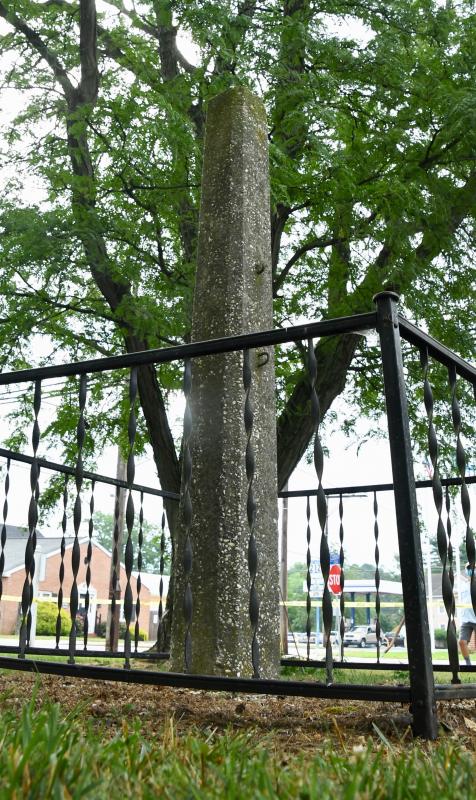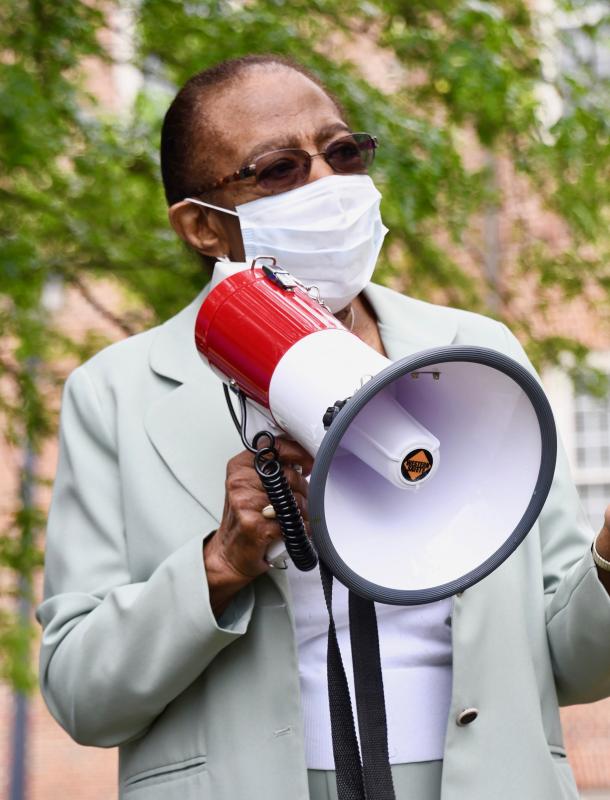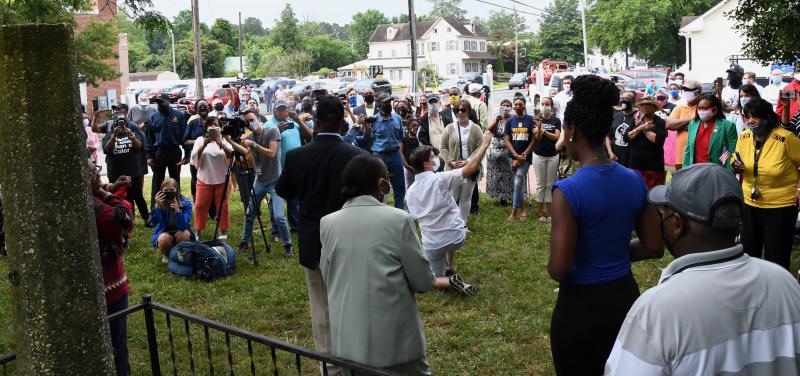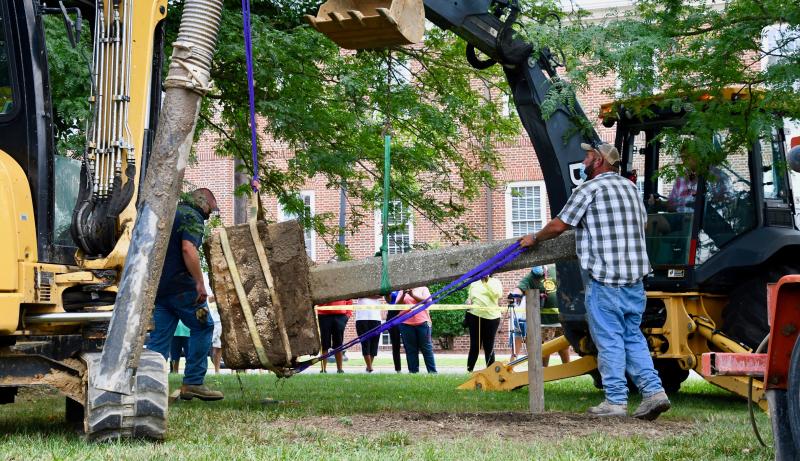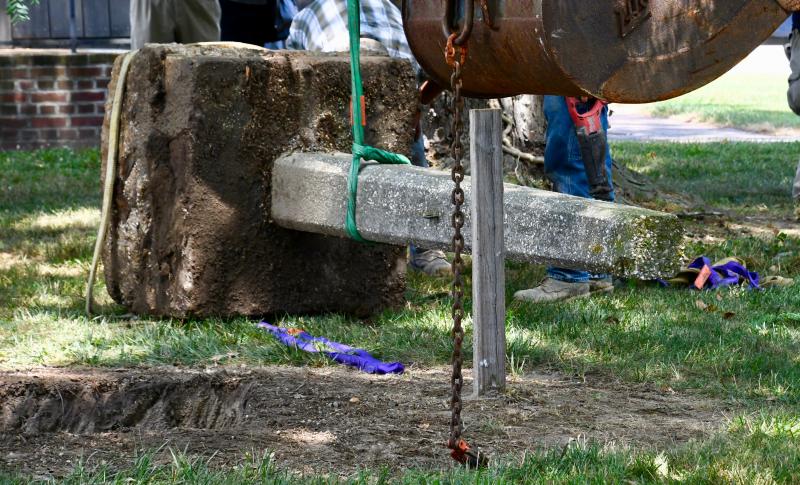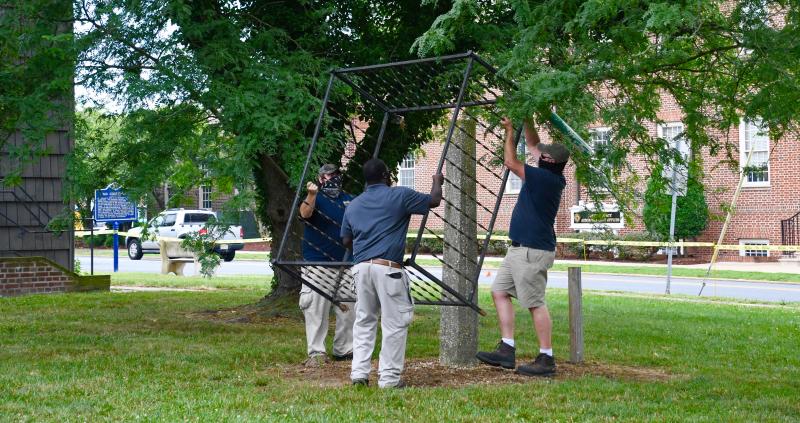Whipping post removed from Georgetown site
A large crowd cheered as a work crew lifted a whipping post from the ground July 1 near the old Sussex County Courthouse in Georgetown.
“This is a historic day we’ve been working on for many years,” said Jane Hovington, who led a group dedicated to removal of the post. “Today is the day that we no longer have to be reminded.”
The decision to remove the whipping post was made in response to calls from the community, and in recognition of the violence and racial discrimination that its display signified to many Delawareans, according to Delaware Division of Historical and Cultural Affairs officials, who coordinated the project.
“Finally, Delaware is removing its last ‘Red Hannah,’ the whipping post, from the public’s view,” said Reba Hollingsworth, vice chairwoman of the Delaware Heritage Commission. “Such relics of the past should be placed in museums to be preserved and protected for those who want to remember the cruel, inhuman, barbarous acts perpetrated on our citizens.”
The post will be moved to a Division of Historical and Cultural Affairs storage facility with other historical objects and artifacts, including a whipping post that once stood near The Green in Dover.
“It is appropriate for an item like this to be preserved in the state’s collections, so that future generations may view it and attempt to understand the full context of its historical significance,” said HCA Director Tim Slavin. “It’s quite another thing to allow a whipping post to remain in place along a busy public street – a cold, deadpan display that does not adequately account for the traumatic legacy it represents, and that still reverberates among communities of color in our state.”
The whipping post was located on the grounds of the Sussex Correctional Institution south of Georgetown. The facility was established in 1931, but the exact date this post was installed is not known. In 1992, the warden donated the post to the state, and it was installed for public display at the state-owned old Sussex County Courthouse site in September 1993.
The history of corporal punishment in Delaware goes back to the earliest days of colonial settlement and included the use of the whipping post and the pillory in all three counties into the 20th century. These punishments were imposed for a variety of crimes throughout history and were disproportionately applied to persons of color. Those sentenced to the whipping post could be lashed up to 40 times for a single offense.
Committee member Brittany Hazzard said removing the post is a symbol of the community coming together. “We are trying to come together as a more caring community and be more understanding,” she said. “Change is coming.”
“Today is the day we are making new history,” said Georgetown Mayor Bill West. “We are making things better as we start to come together. We don’t want to go back there.”
Hollingsworth, a lifelong Delaware educator, historian and civil rights advocate, witnessed a whipping in Dover in her childhood in 1938 that still lives in her memory.
“Even though the whipping occurred more than 80 years ago, I still remember the eerie silence that was pierced by the lashes of the whip. After each lash, the warden would loudly count each lash. The incident is a vivid memory every time I pass the jail on New Street, even though Red Hannah has been removed. When I drive around The Circle in Georgetown, my childhood emotions fill my heart,” she said.
The last use of the whipping post in Delaware took place in 1952. Delaware was the last state to abolish the whipping post, removing the penalty from state law in 1972 through an act of the General Assembly signed by Gov. Russell Peterson.
